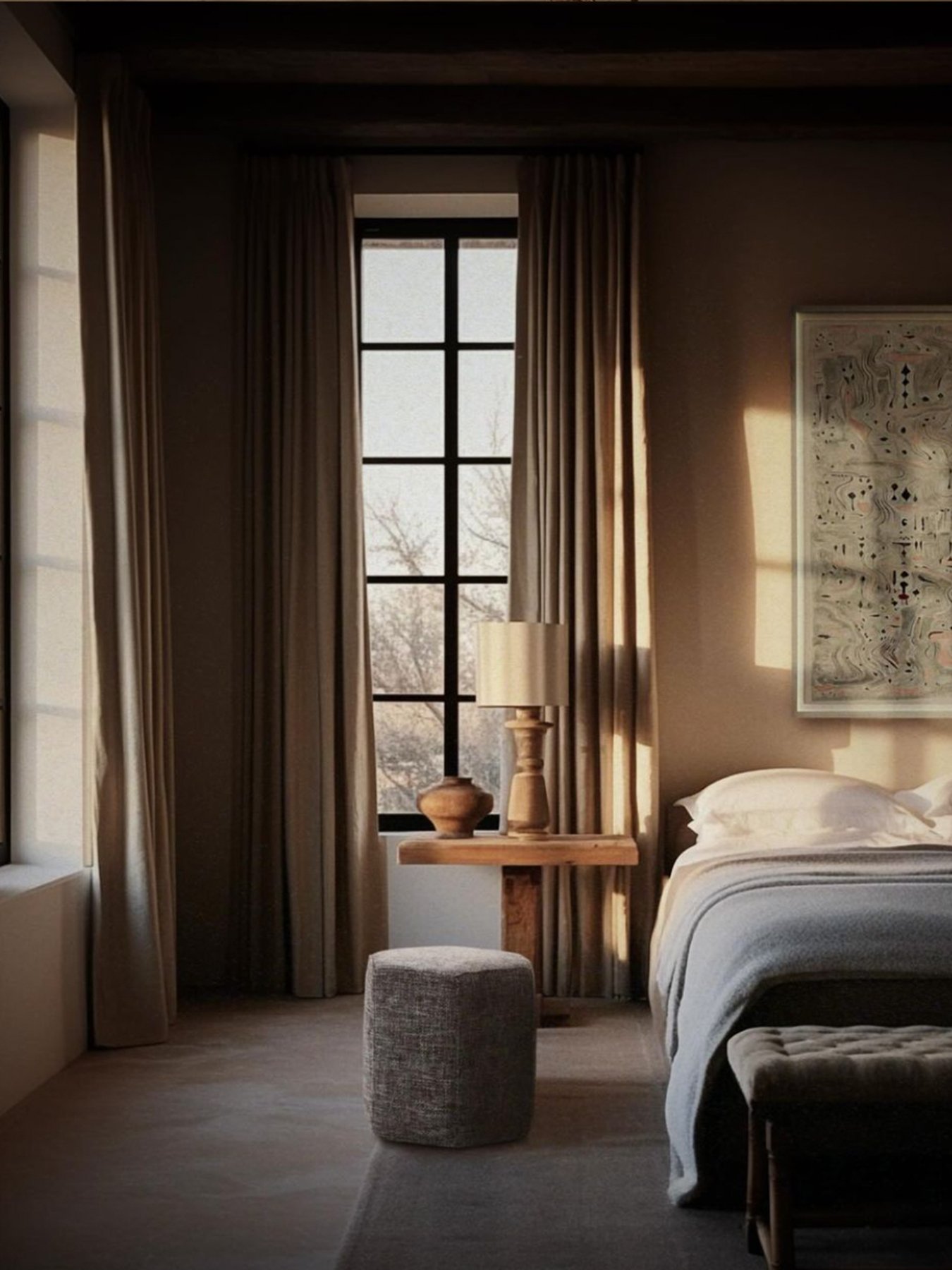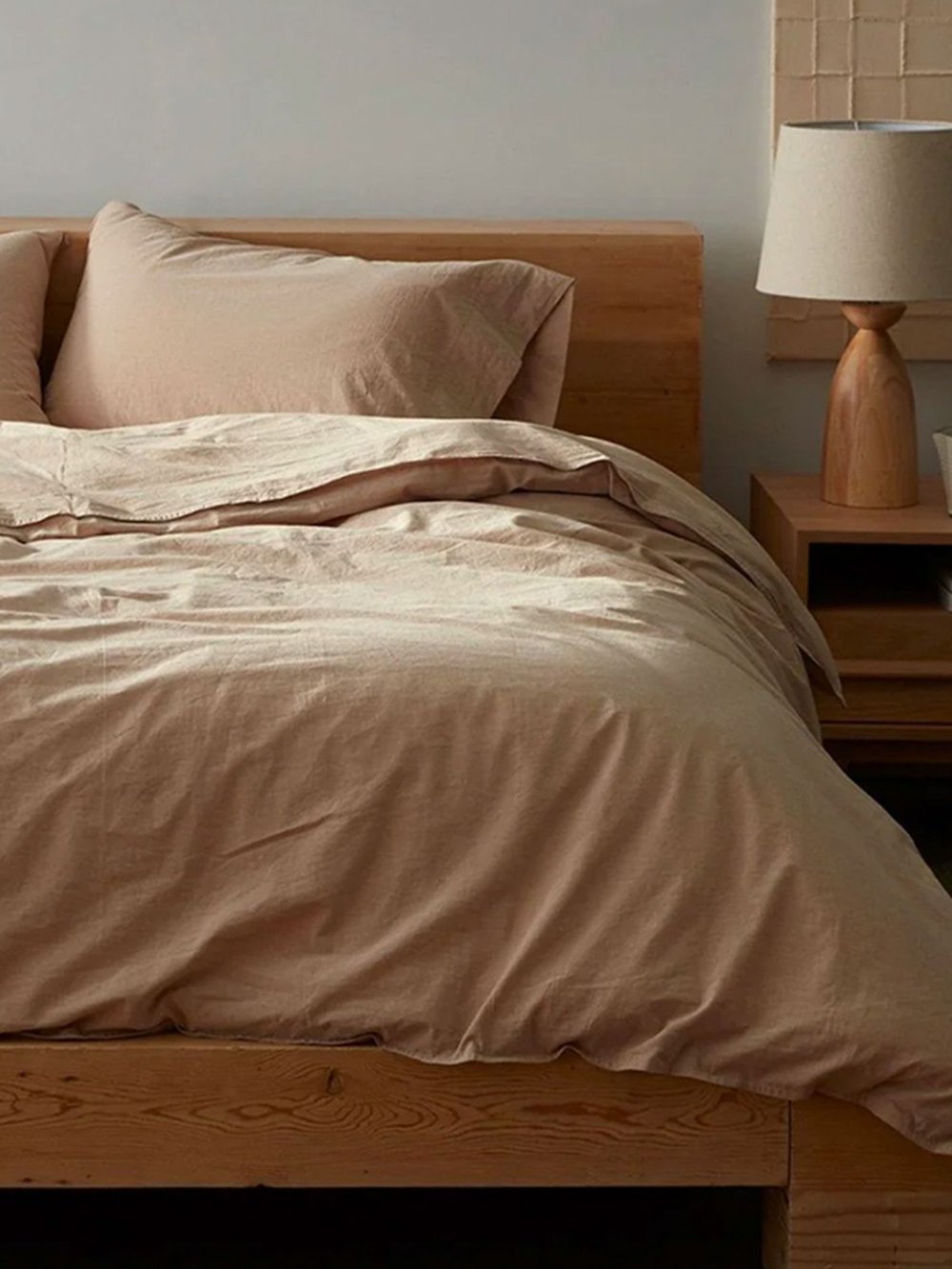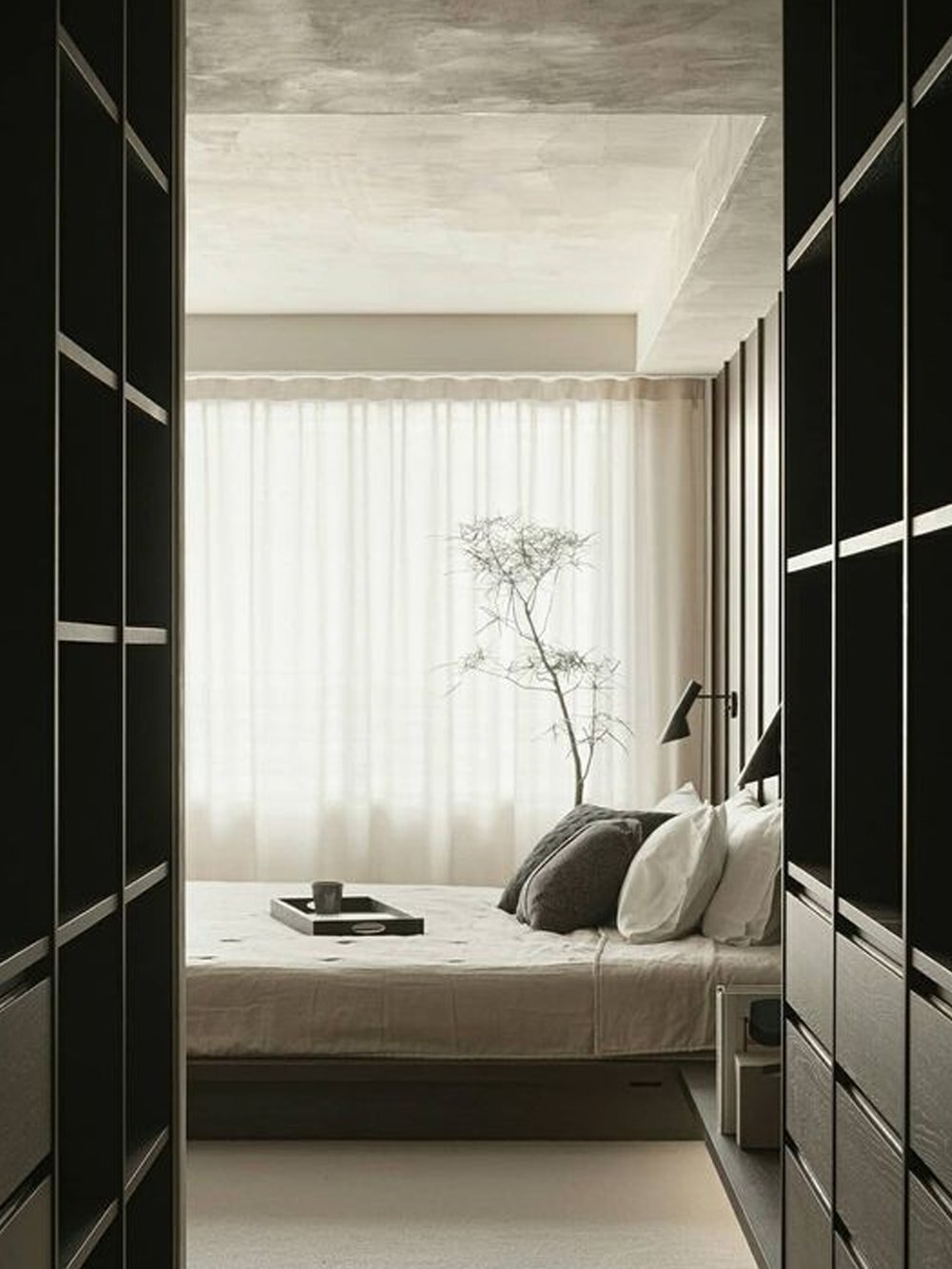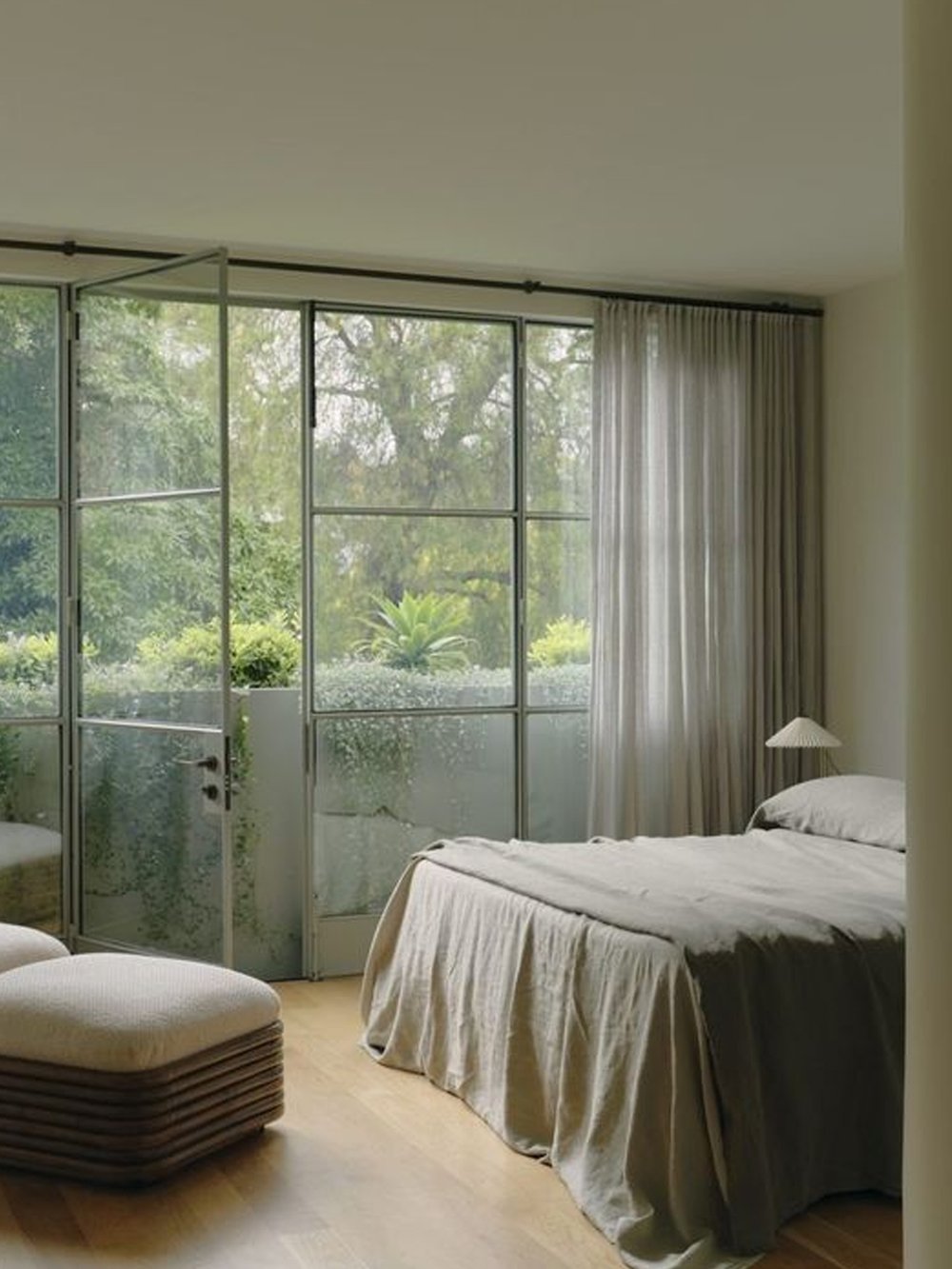
4 min read
How to...Choose a Healthy Mattress
What to consider when looking to buy a non-toxic and sustainable mattress.

4 min read
Discover WLLW's strategies to design a bedroom that supports restorative sleep and overall physical and mental wellbeing.
In this installment of WLLW’s ‘How To’ series we turn our attention to the bedroom, a space in which much of our lives is spent. Too often, however, that time is not spent asleep. Good quality sleep is essential for a multitude of reasons, ranging from physical health to mental wellbeing. During the hours of sleep the body repairs and regenerates tissues, muscles and bones. It's a critical time for healing and growth, particularly for children. Sleep plays a vital role in cognitive functions such as concentration, productivity and performance. It helps consolidate memories, enhances learning and contributes to emotional regulation and resilience. The health consequences of poor quality sleep include a weaker immune system, a disrupted hormonal balance and even an increased risk of heart disease.
Where we take our rest is a crucial aspect of sleep quality; our bedrooms should serve as tranquil sanctuaries where we are able to relax and sleep soundly. Bedroom design is important and there are many factors to consider. Research has shown, for example, that green space exposure contributes to better sleep quality through the facilitation of mental health. Maximizing views of the natural world is only one way of creating a healthy bedroom; from light and temperature levels to layout, materials, bedding and a healthy mattress, intentional choices can make a big difference to how well we sleep each night.



Human physiology has evolved to function in harmony with our planet’s day-night cycle. This circadian rhythm is influenced by environmental cues, of which light is the most significant. Light exposure, especially in the evening, suppresses the production of melatonin, a hormone that helps regulate sleep. Blue light, emitted by electronic devices such as smartphones, tablets and computers, can disrupt our circadian rhythms and interfere with our ability to fall asleep by preventing melatonin production. It is therefore important to eliminate blue light from bedrooms in the evening.
Consider incorporating different lighting options in the bedroom for different times of day. Exposure to warmer, dimmer light in the evening can signal to your body that it's time to wind down and prepare for sleep. Conversely, exposure to cooler, brighter light in the morning can help wake us up and increase alertness by suppressing melatonin production and boosting cortisol levels. Blackout curtains and shades are effective at blocking out light at night – seek out OEKO TEX and Greenguard Gold certified organic cotton and flax for a healthy option.

Our body temperature naturally decreases as we prepare for sleep and reaches its lowest point during the night. A cooler ambient temperature helps facilitate this drop, which is essential for falling and staying asleep. The ideal sleeping temperature varies from person to person, but is generally between 60 to 67°F. Temperature also influences sleep architecture, including rapid eye movement (REM) and non-REM sleep. Studies have shown that cooler room temperatures promote deeper, more restorative sleep.
A smart thermostat is a good option for lowering temperatures at night and raising them in the hour before waking. Humidity is another aspect to consider. The ideal indoor humidity level for sleep typically falls between 30 percent and 60 percent. Using a humidifier or dehumidifier can help regulate levels and create a more comfortable sleep environment. Additionally, ensuring proper ventilation and addressing any sources of moisture in the bedroom can help mitigate the effects of humidity on sleep quality.

Storage and layout play important roles in creating a conducive sleep environment in a bedroom. Storage solutions, such as closets, dressers and shelving units, help keep belongings organized and out of sight, promoting a peaceful atmosphere. The layout of the bedroom should prioritize comfort and ergonomics to promote better sleep quality. This includes selecting a suitable bed size and mattress and positioning the bed away from drafts or direct sunlight. Creating a cozy reading nook will help you relax before bed or meditate in the morning. Nightstands with in-built storage will allow you to keep items for relaxation in the evening, such as books, eye masks or essential oils, close to hand.

Selecting healthy, natural materials for paint, flooring, window treatments and upholstery can have significant benefits for both physical health and overall wellbeing. Many conventional building materials and furnishings contain Volatile Organic Compounds (VOCs) and other toxic chemicals, which can off-gas and contribute to poor air quality. Choosing natural materials that are low in VOCs, such as zero-VOC paint, hardwood flooring and organic fabrics, helps minimize exposure to harmful chemicals and promotes a healthier indoor environment.
By using natural materials that do not emit harmful pollutants, you can improve indoor air quality and reduce the risk of respiratory problems, allergies and other health issues associated with poor air quality. Furthermore, incorporating biophilic design principles into a bedroom can evoke feelings of tranquility, wellbeing and harmony with the environment, promoting restful sleep.


The importance of mattress comfort to sleep quality cannot be overstated. A comfortable mattress provides adequate support to the curvature of your spine to maintain proper alignment while you sleep. It should distribute your body weight evenly, reducing pressure points that can cause discomfort and lead to tossing and turning throughout the night.
Natural materials in mattresses and bed linen offer several health benefits compared to synthetic materials. Organic cotton, wool and silk are more breathable and have moisture-wicking properties, which lower the likelihood of skin irritation. They also reduce the risk of exposure to potentially toxic substances, such as flame retardants, formaldehyde and phthalates, which have been linked to various health issues including respiratory problems, hormone disruption and allergic reactions.

Consider the properties of the paints, varnishes and flooring in the room to avoid undesirable chemicals and pollutants.



Feature Image: Christiane Lemieux
Photography: Ema Peter, Nin Solis, Sarah Ellison Studio, Mariko Read, La Firme, Lincoln Barbour, Cultiver by Nic Gossage, Coyuchi, Janet Mallory Interiors, Samuel Hartnett, Norm Architects, Tom Ross

4 min read
What to consider when looking to buy a non-toxic and sustainable mattress.

4 min read
WLLW dives into designing the kitchen, crafting a space for health and connection.